Background
Several centuries ago, particularly in the 17th century (in 1603), when a series of severe civil riots and warfare were undergone, a dynastic and military-related government (the Tokugawa shogunate) managed to stabilize the general sentiment among citizens. It was high time when the government fixed the political steadiness and ushered in the total isolation from trespassing and foreign forces and influences. This period of approximately two centuries helped Japan thrive and build up its own culture, famous for its indigenous insignias. With indigenous inclinations in its cultural legacy, Japan was proud of its merging with nature that was blanked with unconditional love and care on the Japanese people’s behalf. The burgeoning development of this country in 1854 enabled one of the world-leading empires to expand its boundaries, industrialize, and modernize at “the neck breaking speed.” At the end of the 19 century, Japan was a regional center and power that could compete with the most powerful states at that moment, such as China and Russia. When Japan invaded Forsoma, Korea, and Sakhalin island, it became an economic center and power and a US ally.
For centuries, Japan has been creating its inheritance in order to hand it down from generation to generation. Every time-period has introduced particular traditions, customs, lifestyles, and standpoints that embrace the peculiarities the Japanese residents are famous for in nowadays realities. Being one of the most industrialized and manufactured nations, Japan defies its rivals on a regular basis proving its stable position on the world chart box as the most developed and abundant country full of cutting-edge innovations and creations. In comparison with other top-leading states, Japan can show off its high quality of living, where standards are scaled up to the most modified versions. In other words, Japan presents top-leading brands in the majority of aspects. Manifesting tech-savviness, the Japanese people are famous for their spiritual and cultural prosperity. People can be labeled as conventional knowledge holders that fascinate people from different corners of the world.
Japanese Religion
Buddhism and Shinto are the key Japanese religions, aiming at the refinement of spiritual growth by means of releasing the sacred and innermost potentials human bodies must possess. As to the Shinto religion, it is supposed to be the oldest faith that appeared in Japan (an ancestral place where it was formed). Buddhism was borrowed from the mainland and further adopted within the country. Since that time Buddhism has become the leading religion. Nowadays, these faiths do not compete with each other, and representatives of these religions treat each other with respect as they can co-exist together peacefully. Sometimes, individuals cannot decide on which religion they belong to, and they consider themselves Shintoists or Buddhists, or both. In current realities, religion is not the issue of crucial importance in Japanese people’s lives, as they have become more money-oriented and possessive. However, there are several events that are conducted in accordance with strict religious rules and principles. These events are funerals or weddings, childbirth, the New Year celebrations, and local parties and festivals (matsuri). Most of the local festivals have cultural and spiritual backgrounds which are endowed with respect and high esteem.
Japanese Festivals
As mentioned above, Japanese residents credit to some long-standing traditions and customs. Being not zealous supporters of religious procedures, Japanese citizens excel in carrying out varied and multidimensional festivals (matsuri) conducted annually (Yamashita 127). People from the outer world save money in order to participate in these events. Frankly speaking, only well-to-do people can afford this luxury, so to speak, as Japan is a costly country to visit.
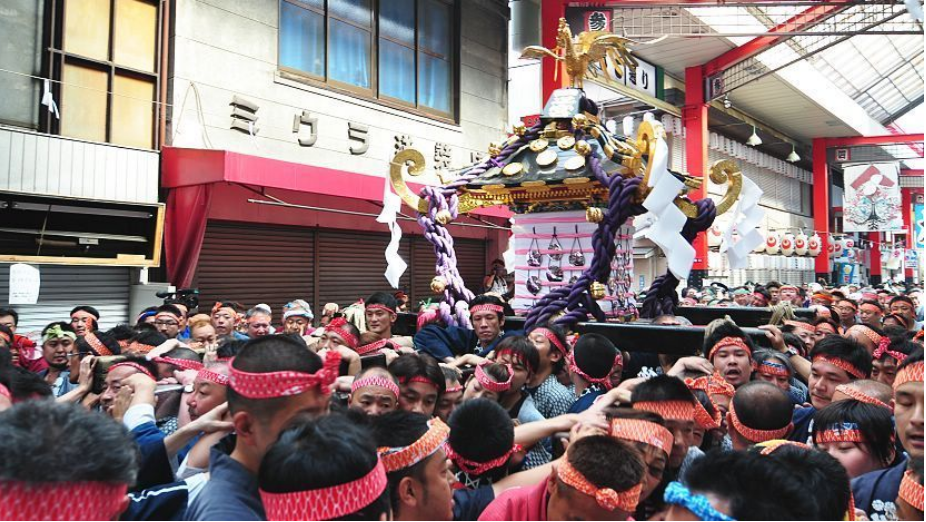
At the fast expanse of local annual festivals, one common thing embraces and unites these events. All celebrations are conducted in the form of processions where festival participants carry Shinto deities (shrine’s kami) through a town in special palanquins (mikoshi – Picture 1). Floats or boats embellished by flowers can characterize the majority of entertainment events or festivals. As a rule, these floats are dubbed by the most current Japanese names, such as Yatai, Dashi, Danjiri. Festivals are held in the form of parades in which people meet with fanfares, and they accompany processions by flute music coupled with drum beats (Picture 2). Every festival has its own character and peculiarities; some can be meditative and calm where people can dump down their negative energy and fill emotional gaps; others can be noisy, highly vibrant, and energetic.
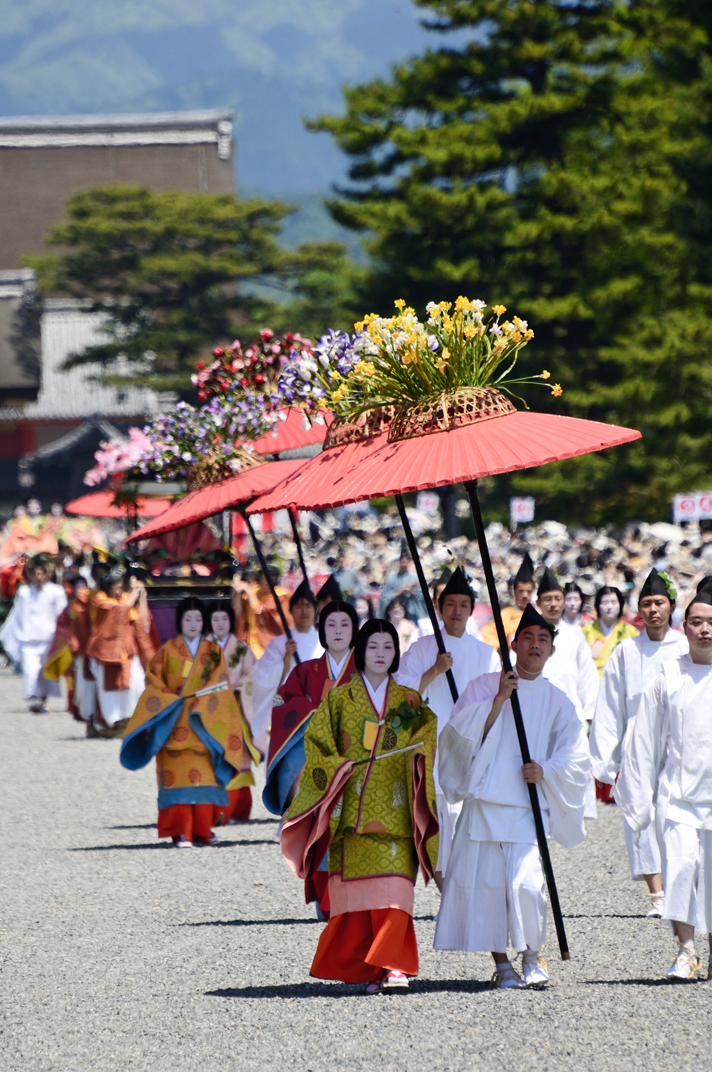
Japanese National Traditions
It stands to reason that this vast and prosperous country is well-known due to its unique and precious heritage, which has been obtained since ancient times. Some traditions were modified and correspond to the current realities; others remain the same as the Japanese people do not want to alter the profound features of their identity (Mitupova 76). For these very reasons, they put in their best endeavors to save long-term customs having an exceptional and marvelous impact on people’s lifestyles and visions.
Japanese Gardens
Chinese and Buddhist philosophy significantly impacted Japanese traditions that formed people’s distinct and unique personalities and identities. Gardens spreading across the country are located in Japanese shrines and temples. These gardens also inspire representatives of the Shinto religion as they treat them as the source of emotional harmony and serenity. These gardens are the attempts to rebuild or recreate gardens that existed several centuries ago to obtain calmness and peace in people’s hearts. The Japanese residents constantly pursue happiness and harmony that they want to build up via living creatures, such as plants and trees. The design of these gardens is typical and involves such components as gravel, water, moss, rocks, and Bonsai. The most famous Japanese gardens and landmarks at the same time are Ryoan-ji Zen Rock Garden (picture 3).
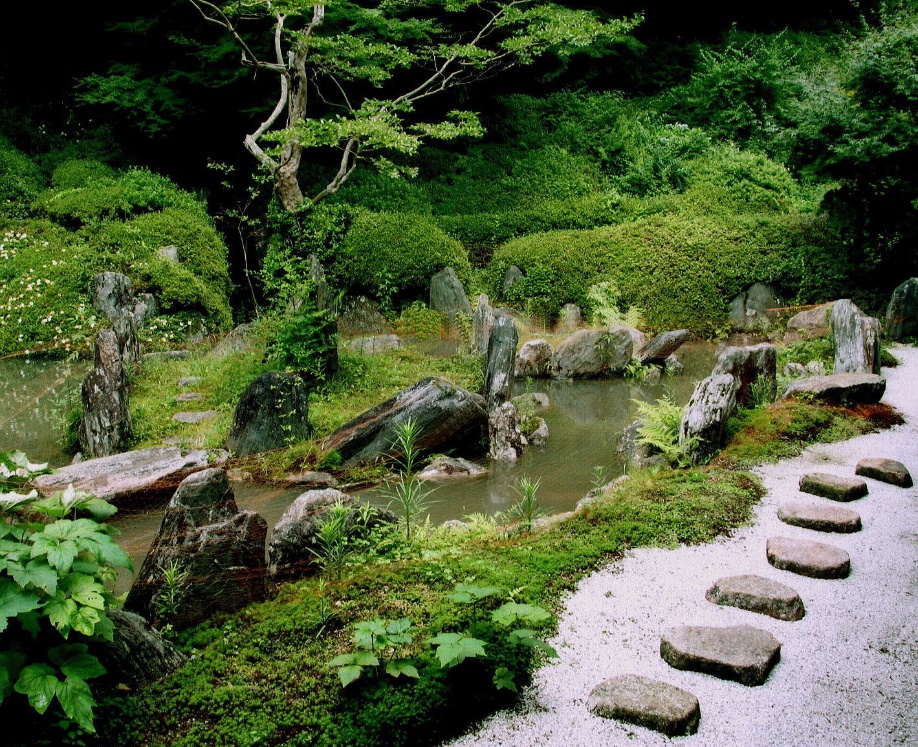
Tea Ceremony
The Japanese Tea Ceremony can be compared to a meditative event, occasion, or performance that is conducted formally. Generally speaking, it is a procedure of treating a guest with tea in a rural and stylized atmosphere (Oshikiri 195). The tradition of tea drinking is symbolic and has roots back to Japanese history (picture 4). It seems that the procedure of offering tea to guests is a unique art requiring craft and particular aptitudes and skills.
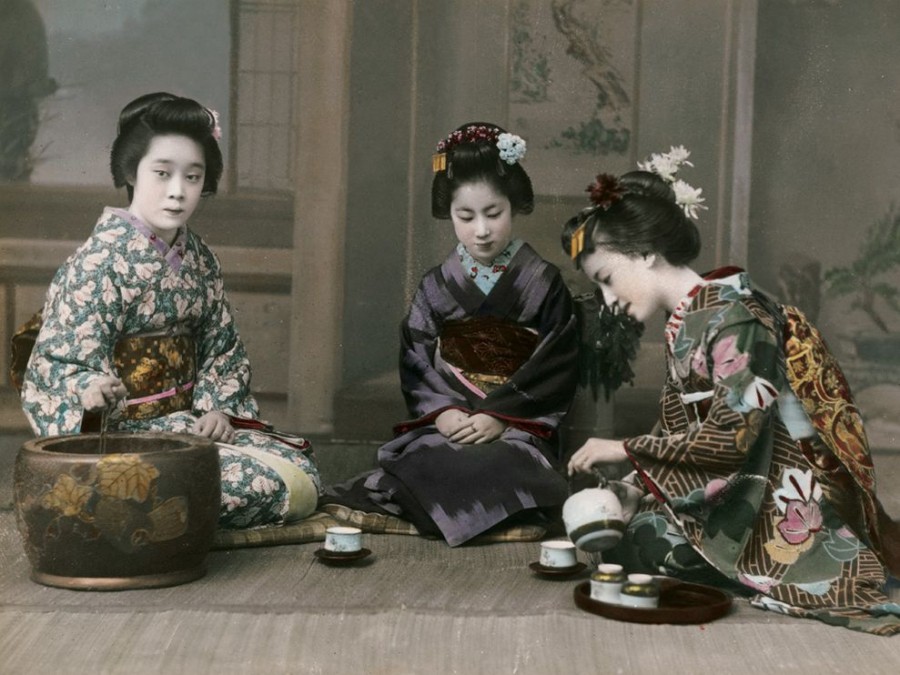
Japanese Cuisine
The country is supposed to be a state full of avid lovers of seafood, which is Japanese cuisine’s primary element. This cuisine is exotic and abundant in protein and carbohydrates. People prefer to eat rice coupled with soybean and tofu daily (Takahashi et al. 2). Japan is the country that has introduced Sushi to the world, which has accepted and spread it across the globe. Food prepared on an iron grill is one of the famous dishes among the Japanese people. Rice wine is also believed to be the conventional dish that is drunk across the country.
Symbols
Japan is the country where symbols play an essential role in people’s lives, as they worship the sacred, hired meanings that they try to uncover and unravel. If someone has a chance to see somebody and come to their places, they can notice that their houses are decorated with embellishments that embrace symbolic value. The top 3 Japanese Symbols are:
- Japanese dragon – Ryu – meaning wisdom, blessing, and strength;
- Tengu – Buddhism worshiping;
- Japanese turtle – Kappa – meaning kindness and politeness.
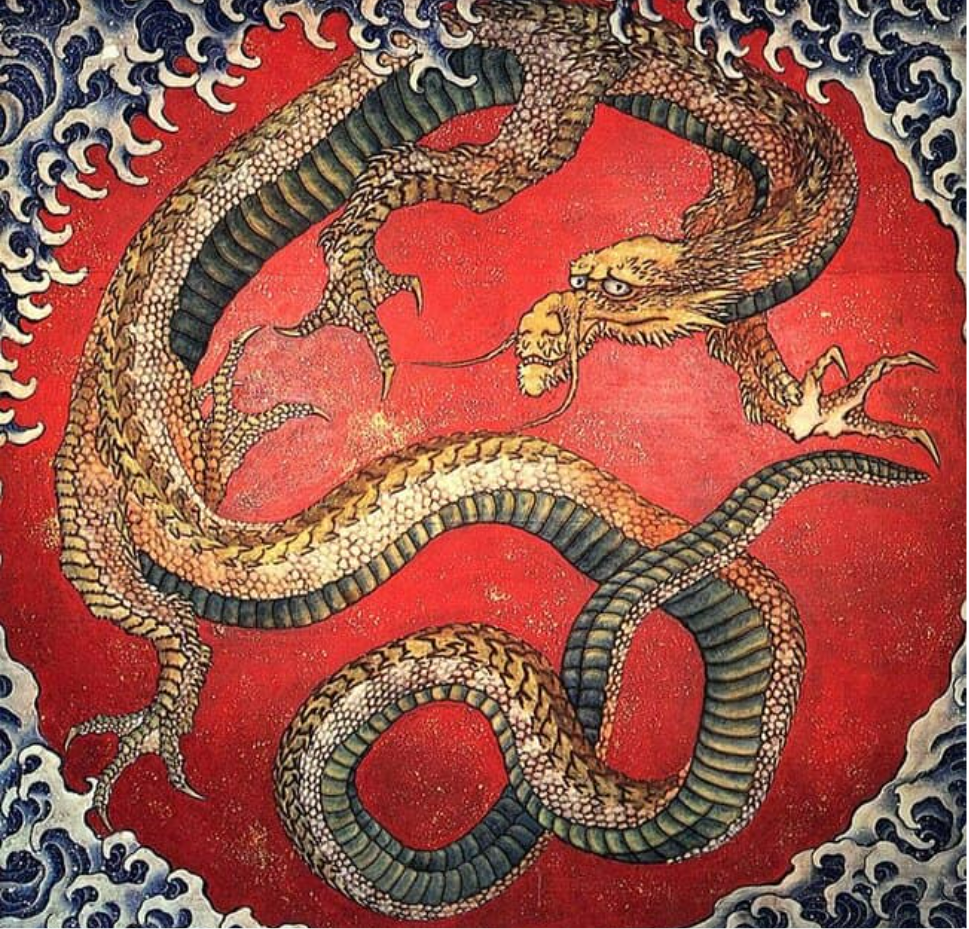
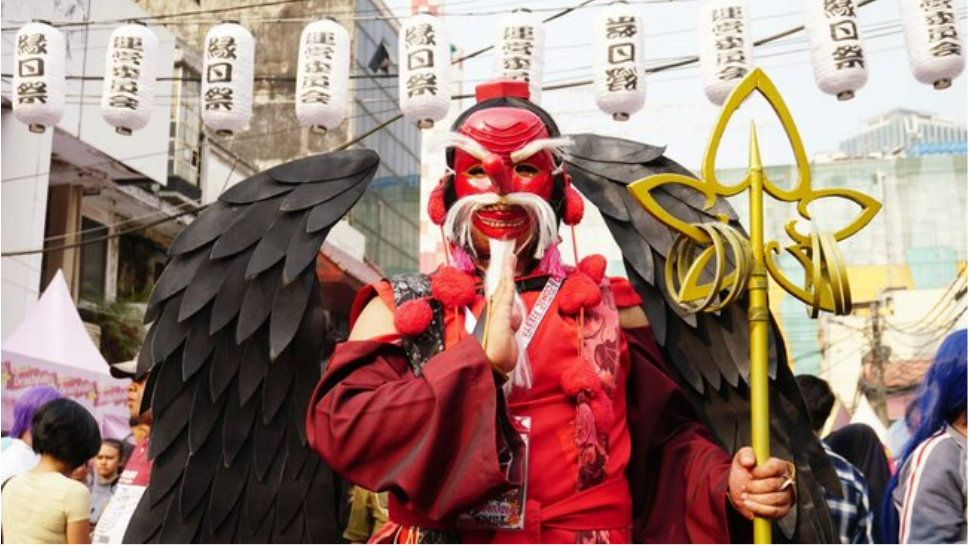

Language
As to the language, it is highly challenging to define the roots of the Japanese language. Some scientists tend to think that there are Altaic predispositions, including Mongolian, Turkish, and other language groups. These groups have a lot in common with the Polynesian language. In comparison with other languages, grammar is simple and does not require. There is no distinction between genders, singular, and plural.
Conclusion
Japan is a country that is abundant with a prospect, natural resources, traditions, and customs. Japanese significant merits lure people from other countries. This country has a lot of landmarks and famous tourist destinations that attract foreigners. Japanese cuisine and festivals are national peculiarities that are worth observing. No one stays indifferent while visiting this country as residents are friendly and people want to come back again and again.
Works Cited
Japan Guide.com. A mikoshi is carried around town, 2019
Kappa, 2019
Japanese festivals, 2019
Tengu,2019
Ryoan-ji Zen Rock, 2019
Ryu, 2019
Takahashi, Takuji, et al. “Pairing of white wine made with shade-grown grapes and Japanese cuisine.” NPJ science of food ,5(1), 2021, 1-3.
Mitupova, Sayana. “Facing Each Other: Japanese and Russian Sociologies.” Journal of Historical Sociology ,34(1), 2021, 75-90.
Oshikiri, Taka. “Selling Tea as Japanese History: Culture, Consumption and International Expositions, 1873–1910.” World Fairs and the Global Moulding of National Identities. Brill, 2021, 193-216.
Takahashi, Takuji, et al. “Pairing of white wine made with shade-grown grapes and Japanese cuisine.” NPJ science of food, 5(1), 2021, 1-3.
Yamashita, Ryohei. “Saving tradition in Japan: a case study of local opinions regarding urban university students’ participation in rural festivals.” Asia-Pacific Journal of Regional Science, 5(1), 2021, 125-147.